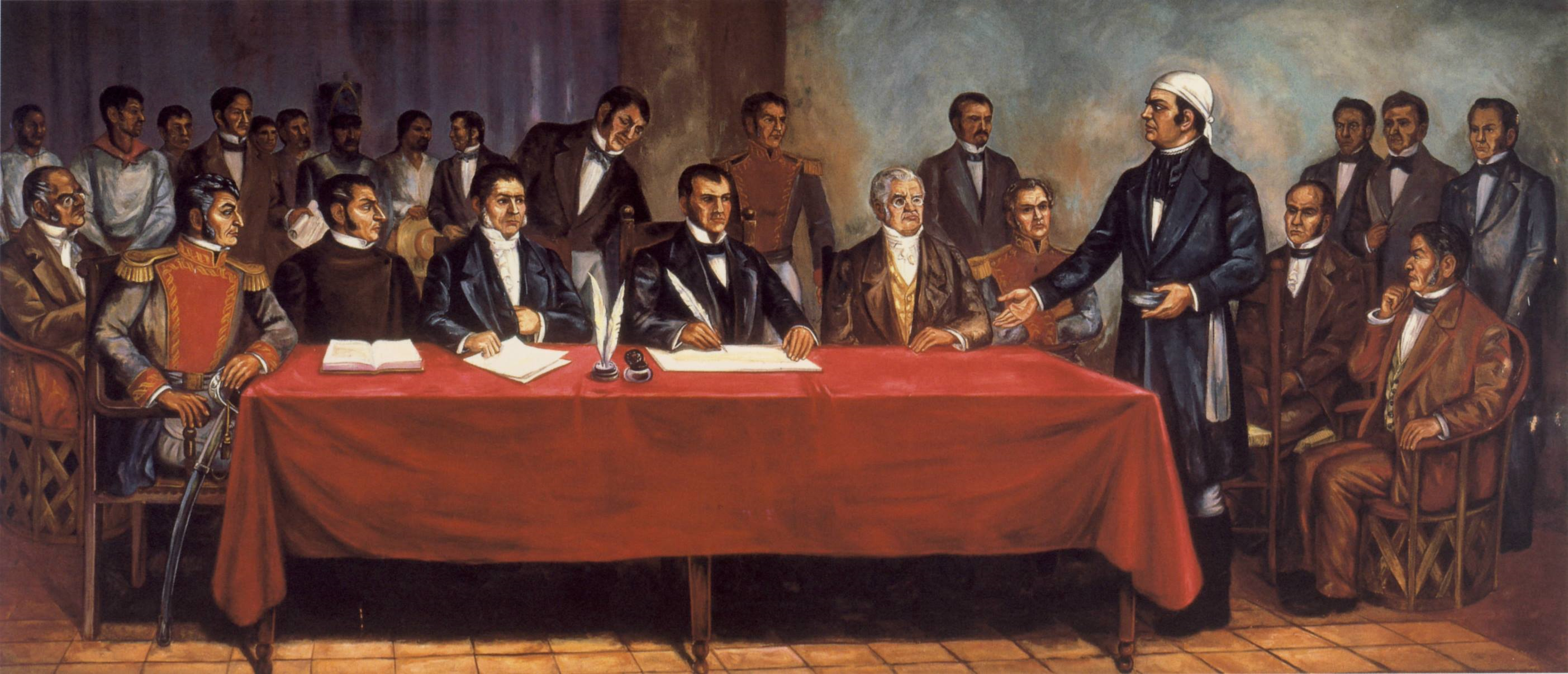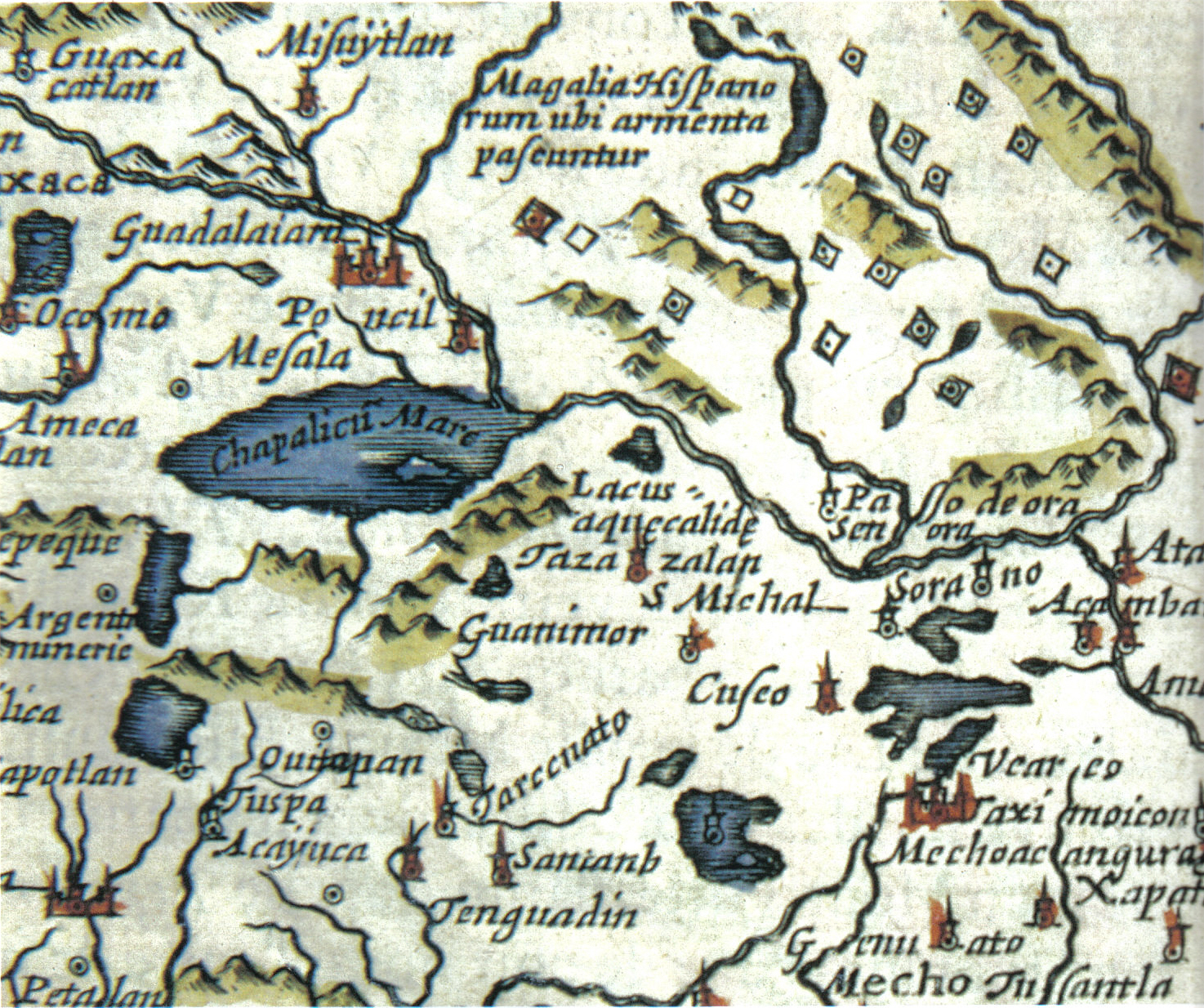|
Leonardo Bravo (general Officer)
Leonardo Bravo (1764 in Chilpancingo, Guerrero – September 13, 1812 in Mexico City) was a liberal Mexican, landowner, and general. He was the brother of Máximo Bravo and father of Nicolás Bravo. Bravo participated with the insurgent faction during the development of the armed movement of the first stage of the Independence of Mexico. Early life Leonardo Bravo was the eldest son of a wealthy Spanish family devoted to agriculture and mining as the owner of the Hacienda of Chichihualco. He married Gertrudis Rueda, and they had a son (Nicolás) and two daughters. The Bravos were known for supporting the local festivities surrounding the Feast of Saint Francis of Assissi. War of Independence When the Mexican War of Independence started in 1810, he, his son Nicolás Bravo, his four brothers Miguel, Víctor, Máximo and Casimiro refused to work with the Spanish royalists. Hermenegildo Galeana, acting on the orders of José María Morelos and Pavón, requested material support ... [...More Info...] [...Related Items...] OR: [Wikipedia] [Google] [Baidu] |
Chilpancingo
Chilpancingo de los Bravo (commonly shortened to Chilpancingo; ; Nahuatl: Chilpantsinko) is the capital and second-largest city of the state of Guerrero, Mexico. In 2010 it had a population of 187,251 people. The municipality has an area of in the south-central part of the state, situated in the Sierra Madre del Sur mountains, on the bank of the ''Huacapa River''. The city is on Mexican Federal Highway 95 which connects Acapulco to Mexico City. It is served by Chilpancingo National Airport, which is one of the five airports in the state. History In pre-Columbian times, the area was occupied by the Olmecs, who built an extensive tunnel network through the mountains, and left the cave paintings in the caverns of Juxtlahuaca. The city of Chilpancingo was founded on November 1, 1591, by the Spanish conquistadores, its name meaning “Place of Wasps” in Nahuatl. During the War of Independence, Chilpancingo was crucial to the insurgent cause as its population participated actively ... [...More Info...] [...Related Items...] OR: [Wikipedia] [Google] [Baidu] |
Siege Of Cuautla
The siege of Cuautla was a battle of the War of Mexican Independence that occurred from 19 February through 2 May 1812 at Cuautla, Morelos. The Spanish royalist forces loyal to the Spanish, commanded by Félix María Calleja, besieged the town of Cuautla and its Mexican rebel defenders fighting for independence from the Spanish Empire. The rebels were commanded by José María Morelos y Pavón, Hermenegildo Galeana, and Mariano Matamoros. The battle results are disputed, but it is generally agreed that the battle resulted more favorably for the Spanish whose siege was ultimately successful with the Mexican withdrawal on 2 May 1812. The siege had many consequences to the political, military and social environment in the contemporary Viceroyalty of New Spain which was ruled since 1810 by Francisco Xavier Venegas. Calleja was turned from military commander of all central Mexico to the military commander of Mexico City after fears began of an insurgent attack on the capital. Mo ... [...More Info...] [...Related Items...] OR: [Wikipedia] [Google] [Baidu] |
People From Chilpancingo
A person ( : people) is a being that has certain capacities or attributes such as reason, morality, consciousness or self-consciousness, and being a part of a culturally established form of social relations such as kinship, ownership of property, or legal responsibility. The defining features of personhood and, consequently, what makes a person count as a person, differ widely among cultures and contexts. In addition to the question of personhood, of what makes a being count as a person to begin with, there are further questions about personal identity and self: both about what makes any particular person that particular person instead of another, and about what makes a person at one time the same person as they were or will be at another time despite any intervening changes. The plural form "people" is often used to refer to an entire nation or ethnic group (as in "a people"), and this was the original meaning of the word; it subsequently acquired its use as a plural form of per ... [...More Info...] [...Related Items...] OR: [Wikipedia] [Google] [Baidu] |
Military Personnel From Guerrero
A military, also known collectively as armed forces, is a heavily armed, highly organized force primarily intended for warfare. It is typically authorized and maintained by a sovereign state, with its members identifiable by their distinct military uniform. It may consist of one or more military branches such as an army, navy, air force, space force, marines, or coast guard. The main task of the military is usually defined as defence of the state and its interests against external armed threats. In broad usage, the terms ''armed forces'' and ''military'' are often treated as synonymous, although in technical usage a distinction is sometimes made in which a country's armed forces may include both its military and other paramilitary forces. There are various forms of irregular military forces, not belonging to a recognized state; though they share many attributes with regular military forces, they are less often referred to as simply ''military''. A nation's military may f ... [...More Info...] [...Related Items...] OR: [Wikipedia] [Google] [Baidu] |
People Executed By Ligature Strangulation
A person ( : people) is a being that has certain capacities or attributes such as reason, morality, consciousness or self-consciousness, and being a part of a culturally established form of social relations such as kinship, ownership of property, or legal responsibility. The defining features of personhood and, consequently, what makes a person count as a person, differ widely among cultures and contexts. In addition to the question of personhood, of what makes a being count as a person to begin with, there are further questions about personal identity and self: both about what makes any particular person that particular person instead of another, and about what makes a person at one time the same person as they were or will be at another time despite any intervening changes. The plural form "people" is often used to refer to an entire nation or ethnic group (as in "a people"), and this was the original meaning of the word; it subsequently acquired its use as a plural form of per ... [...More Info...] [...Related Items...] OR: [Wikipedia] [Google] [Baidu] |
1812 Deaths
Year 181 ( CLXXXI) was a common year starting on Sunday (link will display the full calendar) of the Julian calendar. At the time, it was known as the Year of the Consulship of Aurelius and Burrus (or, less frequently, year 934 ''Ab urbe condita''). The denomination 181 for this year has been used since the early medieval period, when the Anno Domini calendar era became the prevalent method in Europe for naming years. Events By place Roman Empire * Imperator Lucius Aurelius Commodus and Lucius Antistius Burrus become Roman Consuls. * The Antonine Wall is overrun by the Picts in Britannia (approximate date). Oceania * The volcano associated with Lake Taupō in New Zealand erupts, one of the largest on Earth in the last 5,000 years. The effects of this eruption are seen as far away as Rome and China. Births * April 2 – Xian of Han, Chinese emperor (d. 234) * Zhuge Liang, Chinese chancellor and regent (d. 234) Deaths * Aelius Aristides, Greek orator and w ... [...More Info...] [...Related Items...] OR: [Wikipedia] [Google] [Baidu] |
1764 Births
1764 ( MDCCLXIV) was a leap year starting on Sunday and is the fifth year of the 1760s decade, the 64th year of the 18th century, and the 764th year of the 2nd millennium. Events January–June * January 7 – The Siculicidium is carried out as hundreds of the Székely minority in Transylvania are massacred by the Austrian Army at Madéfalva. * January 19 – John Wilkes is expelled from the House of Commons of Great Britain, for seditious libel. * February 15 – The settlement of St. Louis is established. * March 15 – The day after his return to Paris from a nine-year mission, French explorer and scholar Anquetil Du Perron presents a complete copy of the Zoroastrian sacred text, the ''Zend Avesta'', to the ''Bibliothèque Royale'' in Paris, along with several other traditional texts. In 1771, he publishes the first European translation of the ''Zend Avesta''. * March 17 – Francisco Javier de la Torre arrives in Manila to become the new Spanis ... [...More Info...] [...Related Items...] OR: [Wikipedia] [Google] [Baidu] |
Paseo De La Reforma
Paseo de la Reforma (translated as "Promenade of the Reform") is a wide avenue that runs diagonally across the heart of Mexico City. It was designed at the behest of Emperor Maximilian by Ferdinand von Rosenzweig during the era of the Second Mexican Empire and modeled after the great boulevards of Europe, such as the Ringstraße in Vienna and the Champs-Élysées in Paris. The planned grand avenue was to link the National Palace with the imperial residence, Chapultepec Castle, which was then on the southwestern edge of town. The project was originally named Paseo de la Emperatriz ("Promenade of the Empress") in honor of Maximilian's consort Empress Carlota. After the fall of the Empire and Maximilian's subsequent execution, the Restored Republic renamed the Paseo in honor of the La Reforma. It is now home to many of Mexico's tallest buildings such as the Torre Mayor and others in the Zona Rosa. More modern extensions continue the avenue at an angle to the old Paseo. To ... [...More Info...] [...Related Items...] OR: [Wikipedia] [Google] [Baidu] |


_1938.jpg)
